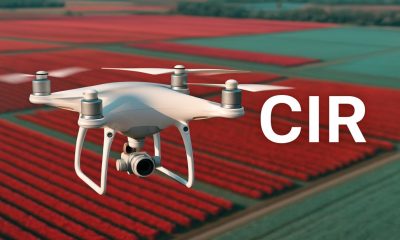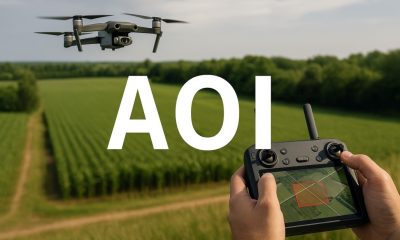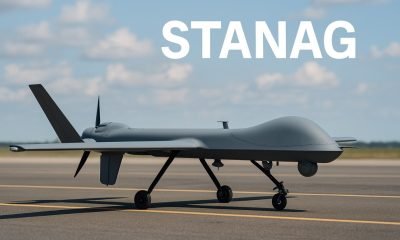- Acronym Guide
- AAM
- ABS
- AC
- ACAS
- ADS-B
- AFAC
- AGL
- AI
- AIM
- ALS
- AM
- AMA
- ANSP
- AOI
- APPI
- AUV
- AUVSI
- ARPAS-UK
- ASTM
- ATC
- BVLOS
- CAA
- CAAC
- CAB
- CASA
- CATT
- CBO
- CBR
- CBRN
- CDMA
- CDR
- CFR
- CIR
- COA
- COMINT
- CORS
- COTP
- COTR
- CPTED
- CV
- C2
- DAA
- DEM
- DFI
- DFS
- DGCA
- DHS
- DOD
- DPA
- DPEs
- DRG
- DRO
- DSM
- DSMX
- DSP
- DSSS
- DTM
- EASA
- EFT
- EO
- EOD
- EO/IR
- ELINT
- EMI
- ESC
- EVLOS
- eVTOLs
- FAA
- FCC
- FCS
- FHSS
- FICCI
- FLIR
- FOB
- FOV
- FPS
- FPV
- GBDAA
- GCP
- GCS
- GDPR
- GML
- GNSS
- GPS
- GSD
- GVC
- HDR
- HOGE
- IACRA
- ICAO
- ICS
- IMU
- INS
- IR
- ISA
- ISR
- ITU
- JARUS
- LAAMS
- LAANC
- LAATM
- LAI
- LBA
- LIDAR
- LOS
- LSALT
- MAC
- MAVLink
- MLIT
- MMS
- MSL
- MTOM
- NDAA
- NCSL
- NFZ
- NIST
- NMEA
- NOTAM
- NPA
- NPRM
- NTIA
- OBIA
- OEM
- OFDM
- OOP
- PASM
- PAV
- PCV
- PdM
- PEC
- PIC
- PID
- PIPL
- PLD
- PM
- PN
- PPK
- PPS
- PSM
- PWM
- UAM
- UAOP
- UAS
- UASTM
- UAV
- UCAVs
- UHD
- UHF
- USV
- UTM
- RAIM
- RCC
- RCS
- RFI
- ReOC
- RePL
- RMS
- ROI
- RPAS
- RPC
- RTH
- RTK
- SaR
- SAR
- SARP
- SBAS
- S.Bus
- SBIR
- SEDENA
- SfM
- SFOC
- SIGINT
- SLAM
- SMS
- SORA
- STANAG
- STTR
- sUAS
- TCAS
- TCCA
- TFR
- TIN
- TOF
- TP
- TPS
- TSA
- VHF
- VLOS
- VTOL
Drone Acronyms
What is UASTM (Unmanned Aircraft System Traffic Management)?
By
Jacob StonerTable Of Contents

Definition
UASTM stands for Unmanned Aircraft System Traffic Management. It is a framework developed to manage the operations of drones (UAS) in low-altitude airspace, ensuring safety, efficiency, and compliance with aviation regulations. UASTM enables coordination between drone operators, service providers, and authorities by using a networked system of flight planning, real-time tracking, and automated airspace management.
Usage
UASTM is used in commercial drone deliveries, aerial inspections, emergency services, precision agriculture, and urban drone operations. It enables drones to operate simultaneously and safely in shared airspace by managing flight authorizations, monitoring traffic, and preventing conflicts through dynamic airspace coordination and remote identification.
Relevance to the Industry
UASTM is essential to unlocking large-scale drone integration into the national airspace. It provides the infrastructure to support beyond visual line of sight (BVLOS) flights, high-density operations, and real-time situational awareness for operators and regulators. UASTM is a foundational element in the future of drone logistics, smart cities, automated inspections, and scalable UAS deployment.
How Does UASTM (Unmanned Aircraft System Traffic Management) Work?
UASTM (Unmanned Aircraft System Traffic Management) works by creating a digital air traffic management ecosystem that coordinates low-altitude drone operations safely and efficiently. Unlike traditional air traffic control (ATC) which manages manned aircraft, UASTM operates primarily in Class G airspace (typically under 400 feet) and leverages automation, remote communication, and data sharing among various stakeholders. Here’s how the system functions:
Pre-Flight Coordination
Flight Planning: Drone operators use UAS Service Supplier (USS) platforms to file flight plans, check airspace availability, view geofenced zones, and access weather conditions.
Authorization Requests: If the planned route enters controlled airspace or sensitive areas, the operator submits an automated request for authorization through the USS.
Real-Time Approvals: The USS communicates with the Flight Information Management System (FIMS), which coordinates with aviation authorities (like the FAA or NAV CANADA) to issue authorizations.
In-Flight Monitoring
Remote Identification (RID): As the drone operates, it continuously broadcasts identification and telemetry data (location, altitude, speed, operator ID) to ensure situational awareness.
Dynamic Airspace Management: UASTM systems monitor all participating drone flights and dynamically reassign routes or issue avoidance instructions if conflict or congestion arises.
Communication Channels: The system ensures real-time communication between drones, USS, and authorities for status updates, alerts, and rerouting instructions when necessary.
Post-Flight Management
Flight Data Logging: All flight data is logged for recordkeeping, safety analysis, and compliance audits.
Incident Reporting: Any deviations, emergency landings, or airspace violations are reported and reviewed via the USS system.
Performance Feedback: Operators may receive automated reports or feedback regarding flight efficiency, rule compliance, and airspace behavior.
Core Technologies Behind UASTM
Cloud-Based Coordination: All UASTM operations rely on cloud platforms to share real-time data between operators, service providers, and regulators.
AI and Predictive Analytics: Advanced algorithms predict traffic conflicts, weather-based route adjustments, and optimize available airspace.
Geospatial Mapping and Geofencing: Geofencing software creates virtual barriers in the air, ensuring drones stay out of restricted or high-risk areas.
Networked Communication: 5G and satellite links are used for high-speed, low-latency communication, crucial for dynamic flight updates.
UASTM is built to handle not just single drone flights, but hundreds or even thousands of concurrent drone operations across urban or rural landscapes. By ensuring each flight is tracked, verified, and routed in coordination with other users of the airspace, UASTM lays the groundwork for safe, scalable drone ecosystems that support everything from package deliveries to emergency response.
Example in Use
“Thanks to UASTM, multiple autonomous drones were able to deliver medical supplies across the city without interfering with each other or manned aircraft.”
Frequently Asked Questions about UASTM (Unmanned Aircraft System Traffic Management)
What are the key components of a UASTM system?
Answer:
UAS Service Suppliers (USS): Provide services such as flight planning, airspace authorization, and live monitoring.
Flight Information Management System (FIMS): Centralizes data exchange between USS and air traffic control (ATC).
Remote ID: Enables authorities to identify and track drones in real time.
Geofencing: Virtual boundaries that help enforce no-fly zones or restricted areas.
Communication Infrastructure: Enables continuous data sharing between drones, operators, service providers, and regulators.
Why is UASTM important for drone operations?
Answer:
Enhances Safety: Prevents mid-air collisions and ensures drones operate in approved zones.
Supports Scale: Enables coordination for large numbers of drones operating simultaneously.
Improves Compliance: Automates adherence to airspace rules and local restrictions.
Promotes Innovation: Paves the way for new use cases such as urban air mobility and high-frequency delivery networks.
How does UASTM work with traditional air traffic systems?
Answer:
Integration: Shares data with manned aviation systems to prevent airspace conflicts.
Real-Time Coordination: UASTM platforms communicate with ATC when required.
Low-Altitude Focus: Operates primarily under 400 feet, complementing existing ATM systems that manage commercial aircraft.
Shared Situational Awareness: Provides visibility to both manned and unmanned airspace users for safe, informed decisions.
For examples of these acronyms visit our Industries page.
As the CEO of Flyeye.io, Jacob Stoner spearheads the company's operations with his extensive expertise in the drone industry. He is a licensed commercial drone operator in Canada, where he frequently conducts drone inspections. Jacob is a highly respected figure within his local drone community, where he indulges his passion for videography during his leisure time. Above all, Jacob's keen interest lies in the potential societal impact of drone technology advancements.











